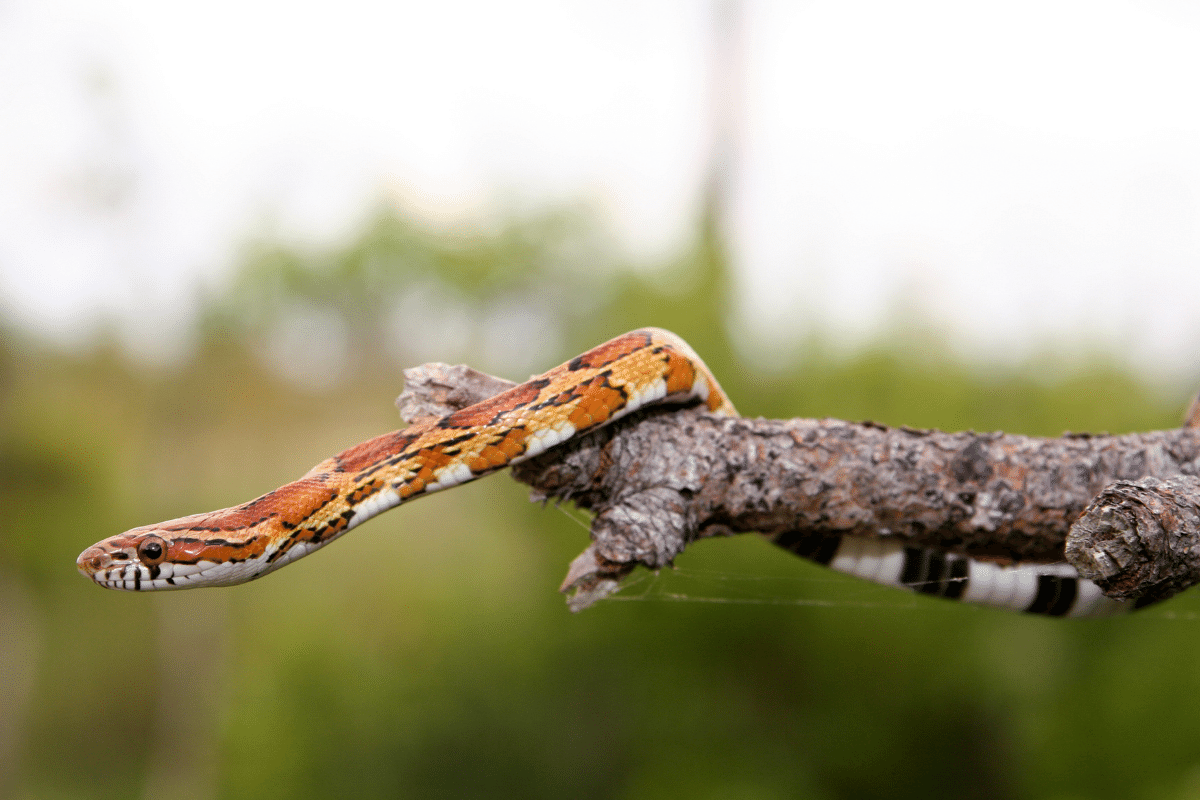How Do Rat Snakes Climb
Snakes don't have hands, feet, claws, or sticky toe pads, but they can climb trees without them. They can also swim, burrow, crawl, and even glide. Whatever they do, their physical composition remains unchanged. Burrowing snakes lack claws, flying snakes lack wings, and water snakes lack fins.
However, some snakes can make modest changes to their bodies. Slender and typically prehensile, expert tree climbers have long tails that can coil around trees. Boa constrictors and other terrestrial crawlers are on the hefty side and have short tails. All sea snakes use their flat, paddle-like tails to move forward. Yellow rat snakes may be found in farmhouses and abandoned structures in suburban regions. Yellow rat snakes like climbing trees, which offers protection from predators.
Since they are more tolerant of people, red rat snakes, commonly referred to as corn snakes, are regularly seen in suburban settings. These stunning snakes have tan, gray, or yellow-orange backgrounds with reddish-orange spots on their backs and flanks. A black and white checkerboard pattern appears on the tummy. Rat snakes are non-venomous, harmless snakes. When confronted, they may become highly defensive and often release an offensive scent. If the situation is very dangerous, they may even strike at you.
Snakes usually use the whole length of their tubular bodies to bend and flex when climbing. A concertina movement is what makes the movement go up and down. The snake tries to find a place above them where it can hold on with its belly scales. Once they are anchored at that point, they tighten the muscles below that grip to pull their body up.
All rat snakes can climb things other than trees with the concertina movement. They extend forward and coil firmly around a cylindrical objects two or three times before drawing the bottom section of the body upward. The snakes moved slowly since this stride needs more effort to prevent slippage.
The majority of the time, snakes that live in trees would like to save energy and avoid using the concertina method. What enables brown tree snakes to ascend steep inclines with minimal assistance? Tree snakes have scales on their bellies that span their whole bodies. These scales are shorter and do not completely round the belly link in other snakes, such as boa constrictors. These scales are placed above one another like roof tiles.
Snakes' cross-sectional shapes are altered by this fold. Like boa constrictors, the majority of snakes have virtually circular cross sections. Corn snakes have a rounded top and corners on the bottom, much like a loaf of bread. The fold extends abruptly from the body of the brown tree snakes.
Snakes may wrap themselves around an artificial tree trunk in a number of ways since their bodies are long and thin. Variations include wrapping uniformly around the trunk or bunching the majority of their bodies at one height. Although a fall from ten meters is unlikely to seriously harm a snake, being back on the ground might put them in danger from predators. The snake will then need to ascend the tree once again, thus it could be more energy-efficient to exercise more caution the first time.
Download the SnakeSnap App on Google Play or the Apple iTunes Store and get a free trial. Then send us a snake picture for us to identify.
